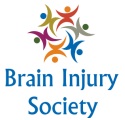Who Are the Homeless?
It sounds just as tragic as it is, with hundreds – perhaps even thousands – of Americans falling into the ever-widening, recession-driven cracks in the protective services webs. Those who fall are most commonly between the ages of 17 and 75.
The cohort, comprised of 900 homeless men and women, shows that the odds of ending up on the street are fully 58 percent. For women, the figures are lower, at 42 percent. This could be related to the preponderance of males living at the fringes of society, or it might correlate to the fact that men are most often involved in the sorts of activities that lead to traumatic brain injury, or TBI.
The study, performed at a larger, Toronto homeless shelter, also examined the association between TBI and poorer mental and physical health, notably the presence of TBI-related seizures and the threat they represent to indigent and relatively solitary adults, even those with provincial health insurance, which in this case included individuals who had valid, provincial health insurance.
The Origin of Homelessness
One of t he more surprising discoveries was that homeless individuals overwhelmingly reported TBIs in childhood, leading researchers to speculate on the causality of head injuries and future homelessness. For Dr. Stephen Hwang, who is a doctor and research scientist working out of St. Michael’s Hospital in Toronto, the research suggests that early-stage TBIs may be the causal factor for those who ultimately wind up homeless.
“In some cases, traumatic brain injury may be a causal factor that contributes to the onset of homelessness, possibly through cognitive or behavioral sequelae of traumatic brain injury.”
Youngsters, who are active, curious and brave (having no sense of their own mortality as yet), incur head injuries at an unbelievable ratio. In fact, TBIs occupy 80 percent of those head injuries incurred by children 1 year and older. The head injuries commonly arrive as a result of assaults, child abuse, falls, auto accidents and recreational activities.
These head injuries can lead to a lifetime of problems, particularly where children received insufficient diagnosis based on medical scans, and do not receive follow-up exams tracking their injuries.
The Long Road Down into Homelessness
The kinds of things that can interfere with age-appropriate physical and mental developments include an inability to communicate clearly or to perform the smallest chores regarding hygiene, namely brushing teeth and washing the face.
According to Dr. Frederick Rivara, professor of pediatrics at the School of Public Health in Seattle, these ‘failure to achieve’ elements indicate a “substantial long-term reduction” in quality of life as the child grows older.
How to Prevent TBIs
Fortunately, most TBIs are the result of falls and car accidents, and the methods used to prevent head injuries in these cases are relatively straightforward. For activities where falling is more common than not – or where the falls sustained can be quite brutal – participants should wear helmets.
When riding in an automobile, any child under the age of 5 or less than 40 pounds – or shorter than 57 inches tall – must be strapped in to a federal government-approved car seat. This is the law in both the United States and Canada. In addition, United States lawmakers and auto manufacturers recommend children’s safety (booster) seats because most children don’t fit well behind a safety belt until they are about 12 years old. It’s hard to enjoy a trip with a rough polycord belt hitting you right across the chin!
Several statistics might surprise readers. First, the ones most likely to suffer TBIs are the youngest (under 4 years of age) and the oldest (15 to 17-years-old). This is because most four-year-olds still live on top of the parental safety net and can’t imagine bad things happening to them.
Looking for the Telltale Signs
Older kids – who sustained more than half the TBIs from all sources – are simply driven to excel in sports in order to be ‘cool’. In addition, most of the TBIs were among boys playing full contact sports like football, soccer and hockey. Unfortunately, adolescent boys tend not to report what they believe is a minor head or brain injury to their parent(s), leaving conditions to develop over several years, often until it is no longer possible to hide some of the side effects.
These can range from erratic behavior to fear of, or hostility toward, “others” (because they might discover the condition). It also includes not being unable to get, or hold, a job or a significant relationship. Where cognitive abilities like talking or counting money or manufactured items are impaired, often severely, the victims of TBI inevitably join the rest of the mentally injured into a downward spiral into hopeless and homelessness.
Many of these student athlete-related injuries could be prevented, or at least ameliorated, if states passed the Zachery Lystedt law, which went into effect in Washington in 2009. Basically what this law does is require players, and their parents, to see a doctor and get an “all clear” health certificate before they can return to the playing field once they have been injured. That law, and other similar ones, is currently in effect in Washington State and in revised format in 30 other states.
Homelessness among Veterans
The most disturbing cases of homelessness arise among veterans of combat, as anyone who has watched movies or television would know. In November of 2009, the Veteran’s Administration announced a five-year plan to eradicate homelessness among veterans. Citing the VA-funded study, reviewers noted that those active combat soldiers who had received head injuries were more likely to fall into homelessness about 5 years post-separation. As one VA policy head noted:
“This may be beneficial for VA homelessness primary prevention efforts to focus on the treatment of veterans with mental disorders as well as on their housing risk.”

